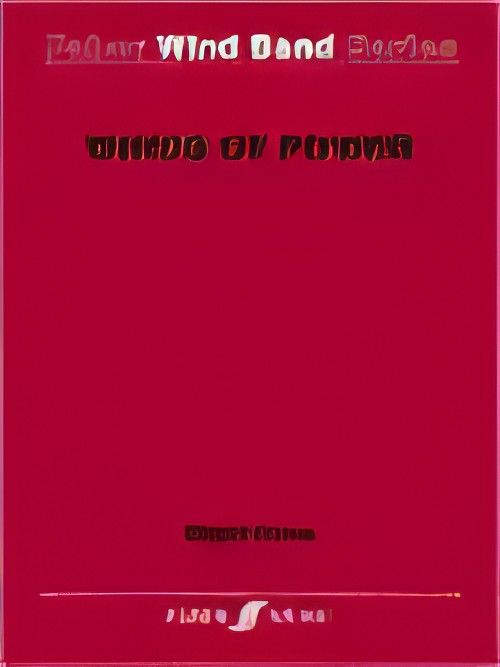Results
-
 £139.99
£139.99Balkan Dreams Wind Band Set (Score & Parts)
Balkan Dreams was inspired by Kees Schoonenbeek's love of the gypsy music originating from Hungary and Romania. Although this is not authentic gypsy music it echoes the compelling and melancholic music heard by the composer, full of dreams and promises. This piece will add a little exotic touch to your concert. 0:11:45
Estimated dispatch 7-14 working days
-
 £45.54
£45.54Danza Espanol (Concert Band - Score and Parts)
Delightful! This unique piece provides a wonderful opportunity for young musicians to experience the classic sounds of Spain. Features plentiful and authentic percussive sounds and the rhythms and harmonies evoke colorful visions of Espania. This is a "must play" for your young and developing band. Your audience will love it!
Estimated dispatch 7-14 working days
-
 £76.99
£76.99Gonna Fly Now Wind Band Set (Score & Parts)
This is best known as the theme from Rocky, the 1997 smash hit for composer, conductor and Oscar winner Bill Conti. The Italian composer Lorenzo Bocci has taken this exciting piece and made it accessible for concert bands. 0:02:30
Estimated dispatch 7-14 working days
-
 £69.99
£69.99Latin Dance Party Wind Band Set (Score & Parts)
Latin Dance Party is an infectious piece, steeped in authentic Latin feel. It starts out with a cha cha cha, a cheerful dance in which the dance partners look each other deep in the eyes. This is followed by a calmer bossa nova, before the Latin Dance Party closes with the carnival sounds of a samba! 04:15
Estimated dispatch 7-14 working days
-
 £64.35
£64.35Latin Sun
A melodic solo for either Alto Sax or Trumpet (it would also sound great on flugelhorn) with band. The solo parts are medium in difficulty and the band parts are slightly easier. Originally written to be performed as a second movement to "Daydreams", this writers earlier solo with band piece which has proven so popular. Excellent program material for you to show off one of your best students or to use when you bring in a guest soloist. This is very nice!
Estimated dispatch 7-14 working days
-
 £64.35
£64.35New York Hippodrome (Concert Band - Score and Parts)
This is the first concert-sized publication of the superb Sousa-Damrosch "Star Spangled Banner." Their Ab version remains one of the most standard and sing-able arrangements of our National Anthem. It was richly harmonized in 1917 by Walter Damrosch and skillfully arranged by John Philip Sousa. This arrangement has been carefully editied by Keith Brion. The full score includes fascinating historical background.
Estimated dispatch 7-14 working days
-
 £75.00
£75.00The Winds of Power (Concert Band - Score and Parts) - Hess, Nigel
After a dark and menacing opening a solo trumpet introduces a theme which will eventually become the centre of a piece and is soon heard tutti in a lyrical form. This is interrupted by a return to the opening mood, with only a brief respite in the form of a chorale for clarinet choir and harp. The theme tries to return once more in a rousing, somewhat cinematic version, but again the sense of foreboding overtakes it. An unsettling march-like section follows before the theme returns in its most lyrical and gentle guise, introduced by solos in the woodwind section. Eventually, a maestoso statement which erupts into a presto coda, ends the journey in a triumphant, more optimistic blaze of sound.Duration: 10.00
Estimated dispatch 7-14 working days
-
 £76.99
£76.99Souvenir De Porto Rico - Louis Moreau Gottschalk
Gottschalk didn't live long enough to leave a large catalogue, but the works he brought to the public were quite popular in their day. This is one of his more well-known works, skillfully rendered for band by Michael Brignolo. It brings the vivid colors and sounds of the Caribbean to life.
Estimated dispatch 7-14 working days
-
 £76.99
£76.99A Little Tune - Thomas Doss
It's the little things that enrich our lives and bring a smile to our faces: a sunrise, a beautiful memory, a friendly conversation or even just a lovely melody. Hopefully, you'll find this is also true for Thomas Doss' little tune which the composer had written for his wife and youngest son as a souvenir of their road trip through Ireland.
Estimated dispatch 7-14 working days
-
 £152.99
£152.99The Legend Of Spirit Island - Philip Sparke
The Legend of Spirit Island was commissioned by the Twin Ports Wind Orchestra, Duluth, Minnesota (Mark Whitlock, conductor), to honour the euphonium player, Dick Carlson. The piece takes its title from a local legend about Spirit Island, which lies in a gap of the St. Louis River called Spirit Lake. The legend tells the story of Chaska, the son of a Dakota Chief, and Wetona, the daughter of Ojibwe Chief Buckado. He was handsome and she was beautiful; it wasn't long before they fell in love. This is a challenging euphonium solo in which the versatile soloist can explore very expressive melodic sequences, as well as energetic, technical sections.
Estimated dispatch 7-14 working days
